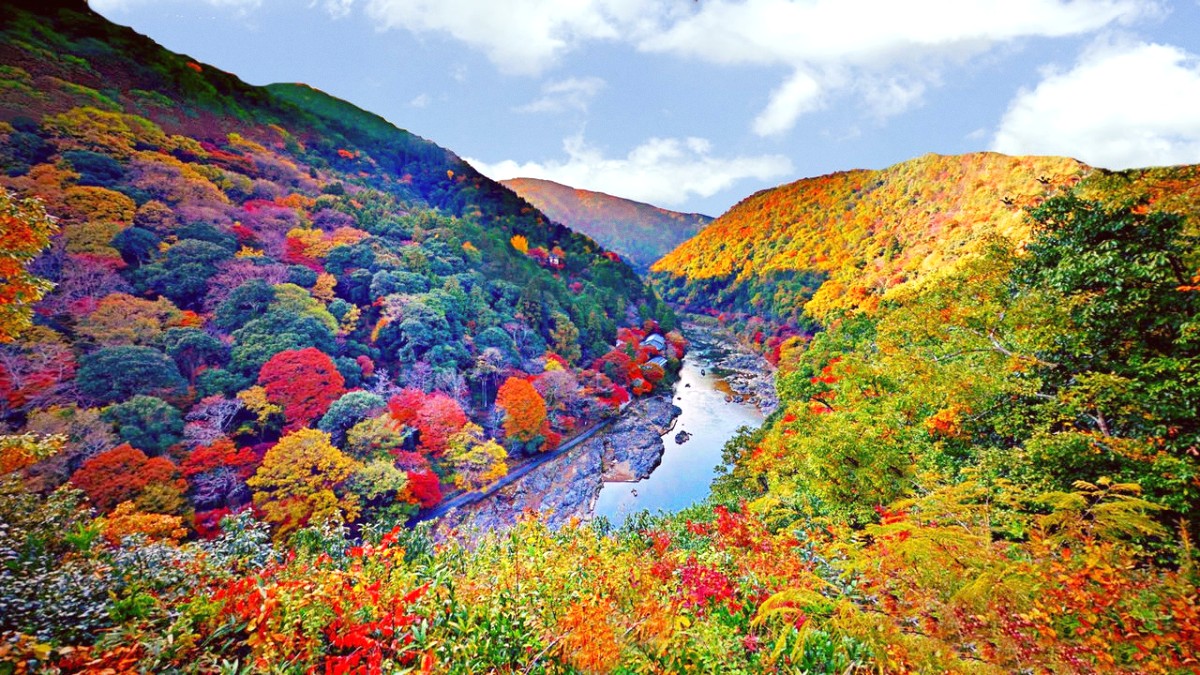
Kyoto, Japan
Spring (March-May): Mild and comfortable temperatures. March averages 8°C (46°F), April 14°C (57°F), and May 19°C (66°F). Precipitation is moderate, with some increase towards May. Humidity levels are comfortable, making outdoor exploration pleasant. Cherry blossoms bloom typically from late March to mid-April.
Summer (June-August): Hot and humid. June averages 23°C (73°F), July 27°C (81°F), and August 28°C (82°F). High precipitation marks this season, especially during June and early July, which is the rainy season. Humidity often exceeds 80%, which feels intense.
High season brings pleasant weather but higher crowds and costs. Shoulder seasons strike a balance. Low season sees fewer visitors and better prices, but consider weather challenges.
Late March - April & Mid-November - Early December
Weather is generally pleasant for sightseeing.
These are the busiest times. Arashiyama, especially the Bamboo Grove, becomes extremely crowded. Accommodation and flight prices are highest.
Late May - Early June & Early September - October
Weather is often good, with fewer crowds compared to peak seasons. Prices for flights and accommodation are more reasonable.
Late May to early June can see the start of early summer rains. Late September and October might experience typhoons, though Kyoto is inland.
July - August & December - February (excluding New Year's)
Fewer crowds, especially in winter. Lower prices for flights and accommodation present good value. Summer brings various festivals, and winter presents unique illuminations and a quiet atmosphere.
Summer is hot, very humid, and rainy. Typhoons are possible in August and September. Winter is cold, with shorter daylight hours, and some outdoor attractions may have reduced operating hours.
Rainy Season (Tsuyu): This period typically runs from early June to mid-July. Expect frequent, often heavy, rainfall. A good rain jacket or umbrella is useful.
This mainly occurs from August to September. While Kyoto is inland and somewhat protected, strong winds and heavy rains from typhoons can influence travel. Monitor local weather forecasts closely if traveling during this time. Travel disruptions like train delays or cancellations are possible.
Late March to mid-April is the window. Aim for early April for peak bloom in most years.
Mid-November to early December presents the best colors. Temples like Tenryu-ji and Jojakkoji are especially beautiful.
Spring (April-May) and Autumn (October-November) present the most comfortable temperatures for walking and exploring.
The Hozugawa River Boat Ride generally operates from mid-March to early December.
If you visit during high season, plan your Arashiyama visit for early morning, ideally arriving before 8:00 AM, to experience the Bamboo Grove and Tenryu-ji with fewer people.
Requirements vary based on your nationality.
Citizens of many countries receive visa-free entry for short-term stays. This includes citizens from the United States, Canada, member states of the European Union, the United Kingdom, Australia, New Zealand, Singapore, South Korea, and Taiwan, among others. For these nationalities, tourism, business meetings, or visiting friends and relatives for up to 90 days usually does not ask for a visa.
If your country is not on the visa exemption list, you must apply for a temporary visitor visa. This application happens at a Japanese embassy or consulate in your home country before you travel. Processing times vary, so plan to apply well in advance.
Japan is a reputation for safety and high public health standards. Awareness of common concerns and emergency procedures assists travelers.
Very low. Petty crime like pickpocketing is rare but possible in extremely crowded tourist areas. General vigilance always applies. Arashiyama is very safe.
Earthquakes: Japan is earthquake-prone. Familiarize yourself with emergency exits and procedures. Typhoons: August to September. Bring heavy rain, strong winds. Monitor forecasts. Heatwaves: July and August pose a health risk; take precautions.
Police: 110. Fire/Ambulance: 119. Free from any phone.
International Tourist Information Center (Kyoto): +81-75-343-6655. General assistance.
Embassy/Consulate: Keep contact information accessible (phone, written, cloud storage).
Japan is perceived as expensive, but careful planning manages costs.
The official currency of Japan is the Japanese Yen (JPY, ¥). Major credit cards like Visa, Mastercard, American Express, and JCB are widely accepted in cities. Smaller shops, local restaurants, temples, and attractions often accept cash only.
ATMs are widely available at post offices (Japan Post Bank) and 7-Eleven convenience stores. These ATMs generally accept international cards for withdrawals. Exchange cash at banks, major hotels, and airports upon arrival.
Consider purchasing an IC card (ICOCA, Suica, Pasmo) upon arrival. Use it on most trains, subways, buses, and some convenience stores.
Arrive with some Yen for immediate expenses, especially for smaller establishments.
Prices for specific items vary. Check menus and entrance fees in advance.
Tipping is not customary in Japan. It can sometimes be considered impolite or confusing. A simple 'Arigato gozaimasu' (thank you) is sufficient.
Seek out smaller, local eateries slightly off the main tourist streets. These often present more authentic and affordable meals.
These figures offer a general guideline and vary based on personal spending habits, booking choices, and specific activities, excluding flights.
Daily Costs: ¥6,000 - ¥12,000 (approx. $40 - $80 USD).
Daily Costs: ¥15,000 - ¥30,000 (approx. $100 - $200 USD).